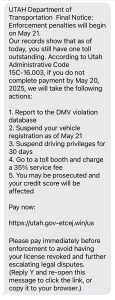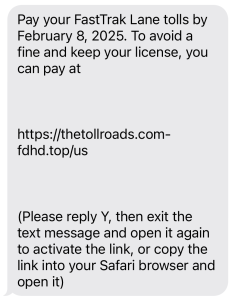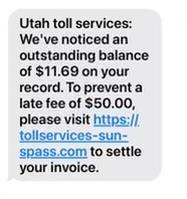Tow Truck Certification
TOW TRUCK OPERATION CERTIFICATIONS
Utah Administrative Rule R909-19-8
Any company who operates a vehicle as a tow truck as defined in UCA 72-9-102(5) is required to obtain three certifications:
- Driver certification
- Tow truck (vehicle) certification
- Company certification
UCA 72-9-602 requires that all three certifications must be obtained prior to operation and that these certifications are to be maintained.
Exception: This does not apply to a person who is towing a vehicle owned by that person in a noncommercial operation i.e. using a tow strap or other means to tow their own vehicle to home shop etc.
Note: The tow truck and tow truck motor carrier certifications are valid for two years from date of issuance. Driver certifications are valid for the time specified by the certifying entity.
TOW TRUCK DRIVER CERTIFICATION
Utah Administrative Rule R909-19-8
Tow Truck Motor Carriers are required to ensure that the driver of a tow truck:
- Obtain and maintain a certification from one of the accepted certification courses
- Has a current valid license for the type of vehicle operated as per UCA 53-3, Uniform Drivers License Act
- Complies with the requirements in UCA 41-6a-1406 and UCA 72-9-603
- Have cleared the criminal background check required in Subsections UCA 72-9-602(2) and (3). In addition, a tow truck motor carrier must notify the department of a tow truck operator whom is not in compliance with UCA 72-9-602(3) within two business days of obtaining knowledge from the Utah DPS Bureau of Criminal Identification (BCI)
- Comply with 49 CFR 380-396 of the Federal Motor Carrier Safety Regulations, including obtaining and maintaining a valid medical examiner’s certificate under 49 CFR 391.45
- Provide tow truck driver certification from the following UDOT approved entities:
- Towing and Recovery Association of America (TRAA) Testing Program – www.towserver.net
- Wreckmaster Certification Program – www.wreckmaster.com
- Utah Safety Council – www.utahsafetycouncil.org
- Utah Tow Truck Training – www.utahtowtrucktraining.com
- I-TECC – https://itecc.org/
- Utah Professional Towing Alliance “Hands On” Course – www.utahtowingalliance.com
- Other driver testing certification programs approved by the Department to meet certification requirements, however, the Tow Truck Motor Carrier must obtain prior approval in writing from the Motor Carrier Division Administrator or Division representative by calling (801) 965-4892
TOW TRUCK (VEHICLE) CERTIFICATION REQUIREMENTS
Utah Administrative Rule R909-19-8
REQUIRED EQUIPMENT
- Amber rotating/oscillating lights – used to alert public of emergency situations; permanent fixtures mounted on vehicle at the highest point/; at least one 6″ diameter light.
- Horn – Used as an audible warning device.
- Portable lights – turn signals, brake lights, and emergency hazards when the rear lights on the tow vehicle are blocked. May also be wireless.
- Only required if tow vehicle is equipped with a wheel lift.
- Fire extinguisher (min. 10BC) – used to put out small fires; must be readily available, secured, and charged.
- Tie down chains or straps (min. 4) – used to ensure load remains secured.
- Door and steering wheel ties – used to ensure doors remain closed while towing; also locks steering (and tires) in place.
- Cones or triangles (min. 3) – used for traffic control; required as emergency equipment on commercial motor vehicle.
- Scoop shovel – used to clean up glass, etc. from roadway.
- Broom – used to clean up glass, etc. from roadway.
- Safety chains (min. grade 7) – used to lock towed vehicle to boom or bed; to prevent excessive swaying and possible breaking away from boom or bed.
- Oil absorbent – used to assist in absorbing spilled diesel fuel, antifreeze, battery acid, and etc. from roadway.
- Debris container (5 gal) – used to contain glass, etc. swept from roadway.
- Chock blocks (2) or stiff legs – used to stabilize the recover vehicle when on ice or other slippery surfaces during recovery operations.
- Safety vest (class 2) – used to highlight the tow truck driver to the public.
VEHICLE MAINTENANCE
- Front of truck – check headlamps, turn signals, four-way flashers, marker and ID lights; proper lamp color, mounting, and visibility; and wipers.
- Side of truck – check wheels, rims, and tires.
- Rear of truck – check tail lamps, stop lamps, turn signals, and 4-way flashers.
- Cargo area – ensure all equipment and other cargo is properly secured.
- Annual State Safety Inspection.
VEHICLE LOAD CAPACITY
- Truck data plate – must be attached to vehicle (or official document available in vehicle); must state manufacturer’s Gross Vehicle Weight Rating (GVWR).
- Boom or Bed data plate – must be attached to boom or bed (or official document available in vehicle); must state boom’s (or bed’s) maximum load capacity.
- Wheel Lift data plate – must be attached to wheel lift, boom, or bed (or official document available in vehicle); must state wheel lift maximum load capacity.
Note: Some vehicles may only have one data plate that gives the information on the bed, boom wheel lift instead of having individual plates on each area.
A tow truck will be certified when all of the required safety equipment, vehicle maintenance, data plates for bed, boom and wheel lift is on the vehicle, and functioning properly.
TOW TRUCK COMPANY CERTIFICATION
TOW TRUCK MOTOR CARRIER CERTIFICATION
For a Motor Carrier to become certified to operate as a tow truck motor carrier, they must ensure all the drivers have and maintain a current certification, all the vehicles used to tow are currently certified and that these certifications are maintained. A tow truck motor carrier must submit an application listing all the drivers and vehicles used to tow along with certifying that they are in compliance with the following:
- Tow receipts have all the required information as per Utah Administrative Rule R909-19.
- All fees including storage, towing, administrative and fuel surcharge fees are posted in an obvious location as per Utah Administrative Rule R909-19.
- The carrier has the proper amount of insurance liability in force.
- $750,000 liability for carriers performing police generated tows only.
- $1,000,000 if performing all types of tows.
- Along with the insurance level mentioned above, the motor carrier must have an MCS-90 (environmental restoration coverage) on file at their principal place of business.
- Motor Carrier must have updated their MCS-150 form every two years per 49 CFR 390.19.
- All vehicles are marked with the proper company name as per 49 CFR 390.21.
- The Unified Carrier Registration fee is paid for all years a carrier is registered with FMCSA as interstate.
- Comply with all the requirements in Utah Administrative Rule R909-19, UCA 41-6a-1406 and UCA 72-9-603.
These compliance reviews must be done at least once every two years. For Further Information Contact the Tow Truck Team at 801-965-4892.



